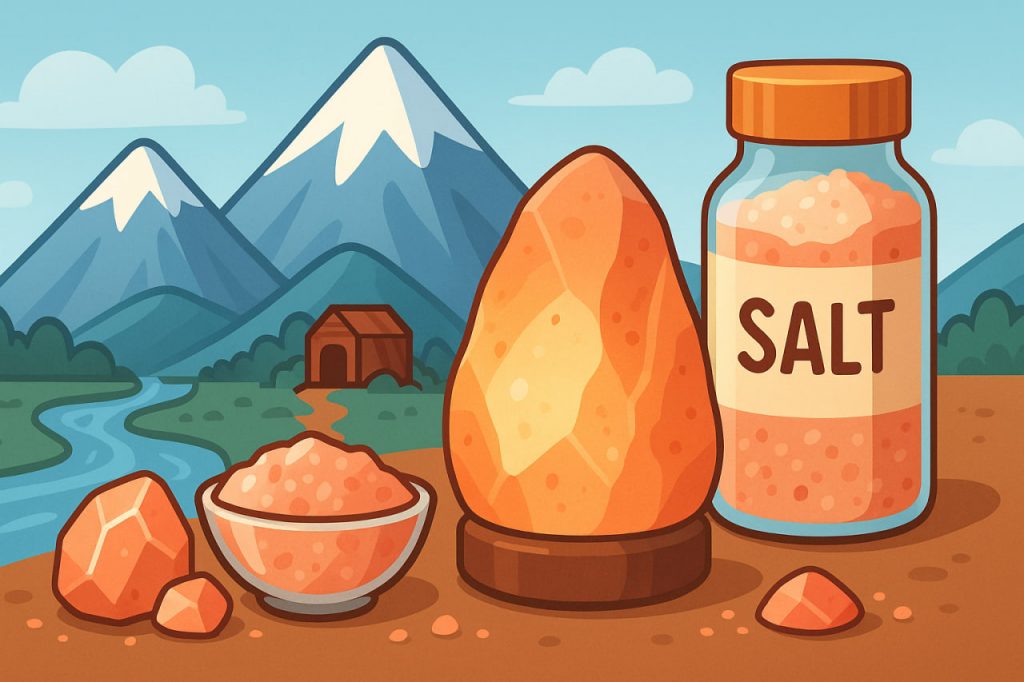Himalayan salt is a type of rock salt (halite) mined from the Punjab region of Pakistan, near the foothills of the Himalayas. Often marketed as one of the purest salts in the world, it is well known for its pinkish color and is used in cooking, decoration, and even health-related products. Its popularity has grown in recent decades due to claims of unique benefits and its exotic image.
1. Origin and Composition
- Himalayan salt formed millions of years ago from the evaporation of ancient seas.
- It is mined primarily from the Khewra Salt Mine, one of the oldest and largest salt mines in the world.
- The pink color comes from trace minerals, especially iron oxide.
- Chemically, it is about 95–98% sodium chloride, with small amounts of potassium, calcium, and magnesium.
2. Culinary Uses
- Used as a table salt for seasoning food.
- Available in fine grains, coarse crystals, or large slabs.
- Salt blocks are sometimes used for cooking or serving, giving a unique presentation.
- Its mineral content gives a slightly different taste compared to refined table salt, though differences are subtle.
3. Claimed Health Benefits
Supporters of Himalayan salt often claim it:
- Improves hydration.
- Balances body pH.
- Provides trace minerals.
- Promotes relaxation when used in baths.
However, scientific evidence shows that its health effects are nearly identical to regular salt. The trace minerals are present in very small amounts, too low to make a significant difference in nutrition.
4. Other Uses Beyond Food
- Salt lamps made from large crystals are marketed as air purifiers, though evidence for these claims is limited.
- Bath salts and scrubs use Himalayan salt for its texture and aesthetic appeal.
- Decorative purposes, including pink salt tiles and candle holders.
5. Risks and Considerations
- Like all salts, excessive consumption can lead to high blood pressure and cardiovascular problems.
- It should be used in moderation as part of a balanced diet.
- The health claims surrounding Himalayan salt should be approached critically.
Conclusion
Himalayan salt is an ancient rock salt known for its striking pink color and wide range of culinary and decorative uses. While it contains trace minerals, its nutritional value is essentially the same as regular salt. Its real appeal lies in its unique appearance and cultural reputation, making it both a functional seasoning and a popular lifestyle product.
Glossary
- Halite – the mineral form of sodium chloride (NaCl), also known as rock salt.
- Trace minerals – small amounts of minerals found in food and natural substances.
- Khewra Salt Mine – the main source of Himalayan salt in Pakistan.
- Sodium chloride – the chemical name for common salt.
- Air purifier – a device or claim to clean air of impurities; in the case of salt lamps, this is unproven.


